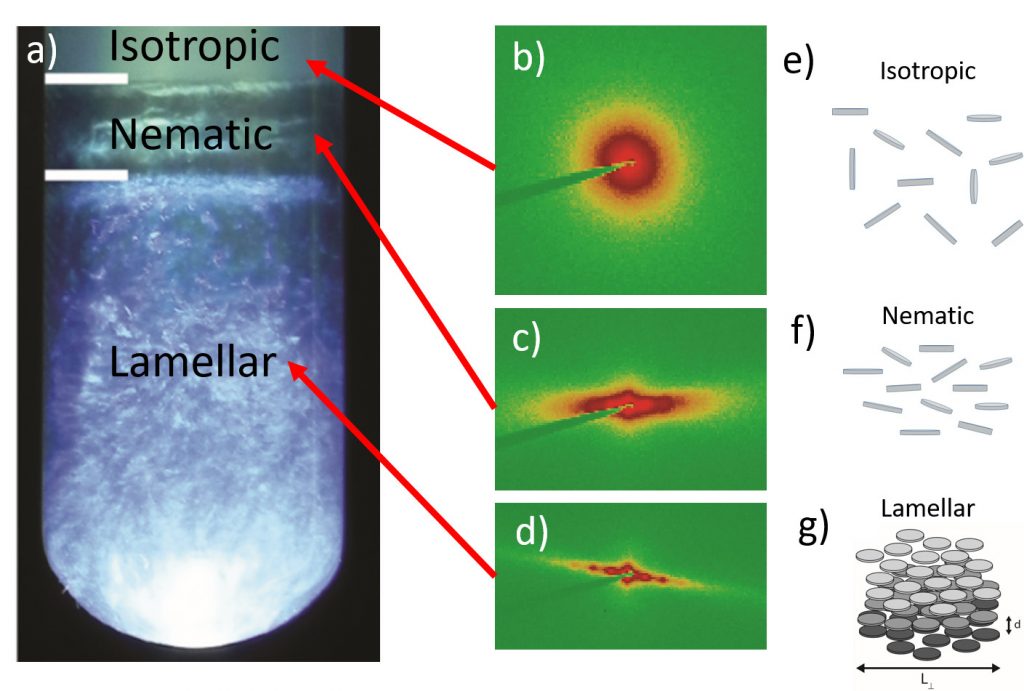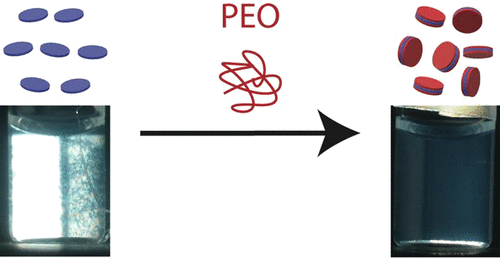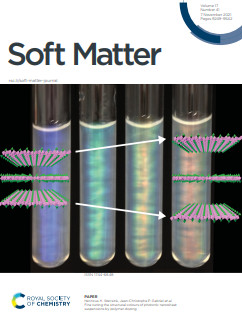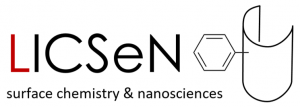Projet ANR ANR-17-CE04-0003 : Pour la surveillance de la qualité de l’eau – 4WATER
La crise de l’eau est le premier risque mondial en termes d’impact sur la société, comme l’a annoncé le Forum économique mondial en janvier 2015 [1]. En effet, les eaux souterraines sont une ressource rare puisqu’elles ne représentent que 0,3 % des réserves totales d’eau douce de la planète. Et déjà, 663 millions de personnes – 1 sur 10 – n’ont pas accès à l’eau potable et 2,4 milliards de personnes – 1 sur 3 – n’ont pas accès à des installations sanitaires adéquates (y compris 1/3 des écoles) [2,3], ce qui a un impact important sur la qualité de l’eau locale et la santé de la population [4] Même lorsque l’eau potable est accessible, sa composition peut varier considérablement en fonction de nombreux facteurs environnementaux et humains [5], ce qui peut la rendre sporadiquement impropre à la consommation. Malgré cela, on sait peu de choses sur ces variabilités et ces interactions, car il n’existe pas de surveillance globale et permanente de ces ressources en eau douce. L’objectif de cette proposition est donc de développer une nouvelle solution de surveillance de la qualité de l’eau, multi-analytes et à faible coût.
- Forum économique mondial. (2015). Rapport 2015 sur les risques mondiaux.
- Organisation mondiale de la santé et Programme commun de surveillance de l’UNICEF (JMP). (2015) Progrès en matière d’eau potable et d’assainissement, mise à jour 2015 et évaluation des OMD.
- United States Census Bureau Estimates. (2015). Horloge des États-Unis et de la population mondiale.
- Contribution de la pollution de l’eau due à un assainissement inadéquat et à la qualité du logement aux maladies diarrhéiques dans les quartiers d’habitations bon marché du Cap, en Afrique du Sud. Thashlin Govender, Jo M. Barnes, Clarissa H. Pieper, Am J Public Health. 2011 July ; 101(7) : e4-e9.
- Variabilité spatiale et saisonnière des caractéristiques de la qualité de l’eau d’une zone humide éphémère. Chad J. Boeckman et Joseph R. Bidwell Proc. Okla. Acad. Sci. 87 : pp 45-54 (2007)

Le projet est coordonné par Jean-Christophe P. Gabriel, directeur de recherche en nanosciences au CEA/NIMBE(Nanosciences et innovation pour les matériaux, la biomédecine et l’énergie), avec les partenaires suivants :
- Patrick Davidson, LPS Laboratoire de Physique des Solides
- Bérengère Lebental, LPICM Laboratoire de physique des interfaces et des couches minces
- Laurent Michot, Phenix – PHysicochimie des Electrolytes et Nanosystèmes InterfaciauX
- Rachid Mouflih, HEMERA France
L’aide financière totale reçue de l’ANR a été de 655 966 euros
Début et durée du projet scientifique : Décembre 2017-Décembre 2022 – 60 Mois (y compris les prolongations).
Doctorant ayant travaillé sur ce projet :
- Karin El Rifaii (Superviseur : Patrick Davidson) ; soutenance le21 décembre 2021. Le manuscrit est ici.
- Gookbin Cho (Superviseurs : Bérengère Lebental et Gaël Zucchi) ; soutenance le15 décembre 2021. Le manuscrit est ici.
- Lina Cherni (Superviseur : JCP Gabriel) ; soutenance prévue le26 janvier 2023. Le manuscrit est ici
Production scientifique :
Brevets:
1)« Méthode de protection d’objets sensibles à l’air ou à l’évaporation » Jean Christophe Gabriel, Monika Spano, Fatima-Ezzahra Hami, WO/2021/089957
=> Disponible pour une licence
Publications et communications à des conférences / ateliers / congrès
Pour une liste de toutes les publications et communications à des conférences liées à ce projet, voir ici dans le dépôt HAL en libre accès.
Points forts :
1) Phases isotropes, nématiques et lamellaires dans des suspensions colloïdales de nanofeuillets
Davidson, P; Penisson, C; Doru Constantin ; Gabriel, JCP
26 juin 2018, Proceeding of the National Academy of Sciences of the USA, 115(26) 6662-6667 (90 citations)
Résumé : Le diagramme de phase des suspensions colloïdales de nanofeuillets chargés électriquement, comme les argiles, malgré leurs nombreuses utilisations industrielles, n’est pas encore compris, que ce soit expérimentalement ou théoriquement. Lorsque le diamètre des nanofeuillets est très grand (de l’ordre de 100 nm à 1 µm), il est très difficile de distinguer la phase liquide-cristalline lamellaire d’une phase nématique avec un fort ordre local d’empilement, souvent appelée nématique « colonnaire ». Nous montrons ici que les lignes de faisceaux de diffusion des rayons X à petits angles récemment améliorées dans les installations de rayonnement synchrotron fournissent des mesures à haute résolution qui nous permettent d’identifier les deux phases sans ambiguïté, à condition que des domaines uniques puissent être obtenus. Nous avons étudié des suspensions aqueuses diluées de nanoréseaux synthétiques de Sb3P2O143- qui s’auto-organisent en deux phases cristallines liquides distinctes, coexistant parfois dans le même échantillon. Un examen attentif des profils de réflexion des rayons X dans les directions perpendiculaires au directeur montre que ces deux mésophases sont une phase nématique colonnaire et une phase lamellaire. Dans cette dernière, la taille des domaines atteint environ 20 µm, ce qui signifie que chaque couche est composée de plus de 600 nano-feuillets. La phase lamellaire n’ayant été que rarement prédite dans des suspensions de disques chargés, nos résultats montrent que ces systèmes devraient être revisités par la théorie ou les simulations. La stabilité inattendue de la phase lamellaire suggère également que les bords et les faces des nanofeuillets de Sb3P2O143- peuvent avoir des propriétés différentes, ce qui leur confère un caractère de particule disparate.

2) Méthodes de dispersion des nanotubes de carbone pour les applications en nanotechnologie : nanocristaux liquides, suspensions, polyélectrolytes, colloïdes et contrôle de l’organisation.
Sergio Manzetti, Jean-Christophe P. Gabriel, International Nano Letters 9 (1), 31-49 (2019) (90 citations).
Résumé : Les nanotubes de carbone (NTC) sont un élément central des nanomatériaux avancés et sont utilisés dans des technologies de pointe, en raison de leur grande résistance à la traction, de leurs excellentes propriétés de transfert thermique, de leurs faibles bandes interdites et de leur stabilité chimique et physique optimale. Les nanotubes de carbone sont également fascinants en raison de leurs structures uniques riches en électrons, qui ouvrent de nombreuses possibilités de modifications et d’altérations de leurs propriétés chimiques et électroniques. Cette revue présente une étude complète des méthodes de solubilisation des nanotubes de carbone, qui constituent la base méthodologique de la synthèse et de la fabrication de nanomatériaux modifiés. Les méthodes présentées ici montrent que les nanotubes de carbone solubilisés ont un grand potentiel d’application en tant que réactifs et composants pour les technologies de cellules solaires avancées, les composés nanochimiques dans l’électronique et les pièces dans la gestion du transfert thermique. Un exemple réside dans la préservation de la chimie aromatique dans les NTC et la ligature de groupes fonctionnels à leurs surfaces, ce qui confère aux NTC un potentiel optimal en tant que contacts Schottky accordables, ou en tant que composants de nanotransistors et de nanorésistances. Les futurs circuits et structures nanoélectroniques peuvent donc dépendre de plus en plus de la façon dont les nanotubes de carbone sont modifiés et fonctionnalisés, et pour cela, la solubilisation est souvent une partie critique de leur processus de fabrication. Cette revue est importante et correspond aux derniers développements en matière de synthèse et de modification des NTC. Elle fournit le savoir-faire nécessaire au développement de nouvelles technologies de pointe basées sur les NTC, en particulier dans les domaines de l’informatique, de la catalyse, de la dépollution de l’environnement et de la microélectronique.
3) Déstabilisation de la phase nématique des suspensions de nanofeuillets d’argile par l’adsorption de polymères
Karin El Rifaii, Henricus H. Wensink, Thomas Bizien, Jean-Christophe P. Gabriel, Laurent Michot, Patrick Davidson, Langmuir 36(42) 12563-12571 (2020)
Résumé : Les mélanges aqueux complexes composés d’argiles gonflantes et de polymères hydrosolubles sont naturellement présents dans les sols et jouent un rôle majeur dans la pédogenèse. Ils sont également très souvent utilisés pour formuler des fluides de forage de puits de pétrole, des peintures et des produits de soins personnels. Les suspensions de certaines argiles naturelles, grâce à leur grand rapport d’aspect de nanoparticules, forment spontanément des phases liquides cristallines nématiques où les particules s’alignent parallèlement les unes aux autres, ce qui affecte leurs propriétés d’écoulement. Nous avons observé que l’ajout de petites quantités de polymères hydrosolubles à ces suspensions d’argile déstabilise la phase nématique par rapport à la phase isotrope (désordonnée). Les polymères que nous avons utilisés (poly(oxyde d’éthylène) et dextran) étaient trop petits pour adopter des conformations de pontage de particules et les expériences de diffusion des rayons X aux petits angles ont montré que la structure de la phase nématique n’est pas modifiée par le dopage du polymère. Cependant, l’isotherme d’adsorption montre que les macromolécules s’adsorbent sur les nanofeuillets d’argile, les recouvrant effectivement d’une couche de polymère. Notre extension de la théorie d’Onsager pour les plaquettes enduites de polymère capture correctement le diagramme de phase expérimental et montre comment la déstabilisation de la phase nématique peut être due au fait que le polymère s’adsorbe davantage sur les faces de la plaquette que sur le bord. Les propriétés d’écoulement de la phase nématique étant très différentes de celles de la phase isotrope, la présence ou l’absence de la première phase est un facteur important à déterminer et à prendre en compte pour expliquer le comportement rhéologique de ces systèmes complexes.

4) Réglage fin des couleurs structurelles des suspensions de nanofeuillets photoniques par dopage de polymères
Karin El Rifaii, Henricus H. Wensink, Claire Goldmann, Laurent Michot, Jean-Christophe P. Gabriel, Patrick Davidson, Soft Matter 17(41) 9280-9292 (2021)
Résumé : Des suspensions aqueuses de nanofeuillets sont facilement obtenues en exfoliant des composés minéraux de faible dimension tels que H3Sb3P2O14. Les nanofeuillets s’auto-organisent, à faible concentration, en un empilement périodique de membranes, c’est-à-dire une phase liquide-cristalline lamellaire. En raison de la dilution, cet empilement a une grande période de quelques centaines de nanomètres, il se comporte comme un matériau photonique unidimensionnel et présente des couleurs structurelles. Nous avons étudié expérimentalement la dépendance de la période par rapport à la concentration des nanofeuillets. Nous avons montré théoriquement qu’elle ne peut pas être expliquée par l’interaction DLVO habituelle entre des lamelles uniformes, mais que la nature particulaire des membranes chargées de nanofeuillets doit être prise en compte. En outre, nous avons observé que l’ajout de petites quantités de poly(oxyde d’éthylène) (PEO) de 100 kDa diminue la période et permet d’ajuster la couleur dans toute la gamme visible. Le PEO s’adsorbe sur les nanofeuillets, induisant une forte réduction de la charge des nanofeuillets. Cela est probablement dû au caractère de base de Lewis des unités EO du PEO qui deviennent protonées au faible pH du système, une interprétation soutenue par la modélisation théorique. Curieusement, l’ajout de petites quantités de PEO de 1 MDa a l’effet inverse d’augmenter la période, ce qui suggère la présence d’une répulsion intermembranaire supplémentaire qui n’a pas encore été identifiée. D’un point de vue appliqué, notre travail montre comment les couleurs de ces matériaux photoniques unidimensionnels peuvent être facilement accordées non seulement en faisant varier la concentration des nanofeuillets (ce qui pourrait impliquer une transition de phase) mais aussi en ajoutant du PEO. D’un point de vue théorique, notre approche représente une étape nécessaire pour établir le diagramme de phase des suspensions aqueuses de nanofeuillets chargés.

5) Colloïdes nanocomposites or-argile avec des propriétés cristallines liquides et plasmoniques
Karin El Rifaii, Patrick Davidson, Laurent Michot, Cyrille Hamon, Chem.Commun, 2021,57, 10359-10362
Résumé : L’attribution aux matériaux à cristaux liquides (CL) des propriétés plasmoniques des nanoparticules métalliques est activement recherchée pour des applications. Nous avons atteint cet objectif en synthétisant des nanoparticules d’or sur des nanofeuillets d’argile, ce qui a conduit à des suspensions de nanocomposites nématiques. Les observations optiques et l’analyse structurelle montrent la croissance des nanoparticules d’or sans altérer les propriétés LC des nanofeuillets. Ces colloïdes présentent des couleurs structurelles plasmoniques et peuvent être alignés par un champ électrique, ce qui est pertinent pour la chimie fondamentale et la chimie des matériaux de la LC colloïdale.
6) » Les suspensions aqueuses d’argiles smectites forment-elles une phase cristalline liquide smectique ? « Karin El Rifaii, Henricus H. Wensink, Florian Puchtler, Ivan Dozov, Thomas Bizien, Laurent J. Michot, Jean-Christophe P. Gabriel, Josef Breu, Patrick Davidson, Langmuir, 38(48) 14563-14573 (2022).
Résumé : Les stratégies ascendantes pour la production de nanostructures bien définies reposent souvent sur l’auto-assemblage de particules colloïdales anisotropes (nanofils et nanofeuillets). Ces éléments constitutifs peuvent être obtenus par délamination dans un solvant de cristallites de faible dimension. Pour optimiser la disponibilité des particules, il est essentiel de déterminer le mécanisme de délamination et les différents stades d’organisation des particules anisotropes en dispersion. Nous abordons cette question fondamentale en exploitant un système récemment développé d’argile minérale fluorohectorite smectite qui se délamine dans l’eau, conduisant à des dispersions colloïdales de feuillets d’argile monocouche et de très grande taille (≈20 μm) à haute dilution. Nous montrons que lorsque les cristallites d’argile sont dispersés dans l’eau, ils gonflent pour former des empilements périodiques unidimensionnels de feuillets de fluorohectorite avec une fraction volumique très faible (<1%) et donc des périodes énormes (≈100 nm). En utilisant la microscopie optique et la diffusion synchrotron des rayons X, nous établissons que ces empilements colloïdaux présentent de fortes similitudes, mais aussi des différences subtiles, avec une phase cristalline liquide smectique. Malgré la forte dilution, les empilements de feuilles colloïdales, appelés accordéons colloïdaux, sont extrêmement robustes sur le plan mécanique et peuvent persister pendant des années. De plus, lorsqu'ils sont soumis à des champs électriques alternatifs, ils tournent comme des corps solides, ce qui démontre leur remarquable cohésion interne. En outre, notre modèle théorique rend compte de la dépendance de la période d'empilement par rapport à la concentration de la dispersion et à la force ionique et explique, en invoquant l'effet Donnan, pourquoi les accordéons colloïdaux sont cinétiquement stables pendant des années et imperméables au cisaillement et au mouvement brownien. Notre modèle n'étant pas spécifique à un système, nous pensons que des accordéons colloïdaux similaires apparaissent fréquemment en tant qu'état intermédiaire au cours du processus de délamination de cristaux bidimensionnels dans des solvants polaires.
7) Recomposition cristalline de matériaux 2D à partir de leurs suspensions de nanofeuillets. Lina Cherni, Karin El Rifaii, Henricus H. Wensink,* Sarah M. Chevrier, Claire Goldmann, Laurent J. Michot, Patrick Davidson,* Jean-Christophe P. Gabriel* Nanoscale 15, 18359-18367 (2023). Fait partie des articles les plus populaires de Nanoscale en 2023.
Résumé : Nous rapportons ici le repliement hautement ordonné des matériaux diélectriques phosphatoantimoniques en couches H3(1-x)M3xSb3P2O14, (où M = Li, Na, K, Rb, Cs et 0 ≤ x ≤ 1), à partir de leurs nanofeuillets dispersés dans une suspension colloïdale, induit par un simple changement de pH à l’aide de bases alcalines. Les suspensions aqueuses de H3Sb3P2O14 sont quelques-uns des rares exemples de suspensions colloïdales basées sur des matériaux 2D présentant une phase cristalline liquide lamellaire. Comme la période lamellaire peut atteindre plusieurs centaines de nanomètres, les suspensions présentent des couleurs structurelles vives et comme ces couleurs sont sensibles à divers produits chimiques, les suspensions peuvent être utilisées comme capteurs. Les structures de la phase cristalline liquide lamellaire et de la phase empilée ont été étudiées par diffusion des rayons X (petit et grand angle), ce qui a permis de suivre la dépendance de l’équilibre entre la phase lamellaire et la phase empilée par rapport au taux d’échange de cations, x. Le schéma de diffraction des rayons X de la phase empilée est presque identique à celui de la phase cristalline M3Sb3P2O14, ce qui montre que l’empilement est très précis et évite le désordre turbostratique des nanofeuillets classiquement observé dans l’empilement de nanofeuillets d’autres matériaux 2D. Il est frappant de constater que le processus de ré-empilement présente des caractéristiques qui rappellent fortement une transition de phase du premier ordre, avec l’existence d’une région de coexistence de phases où l’on peut observer simultanément des périodes lamellaires de ∼1 nm (espacement entre les couches de la phase ré-empilée) et de ∼120 nm. En outre, cette transition de phase du premier ordre est bien décrite théoriquement en incorporant un potentiel d’interaction lamellaire de type Lennard-Jones dans un modèle de physique statistique basé sur l’entropie de la phase lamellaire des nanofeuillets. Notre travail montre que l’échange précis de cations produit à température ambiante par une réaction de neutralisation classique utilisant des bases alcalines conduit à un empilement cristallin des nanofeuillets de Sb3P2O143- exfoliés de la suspension, évitant le désordre turbostratique typique des matériaux 2D de van der Waals, qui est préjudiciable au dépôt contrôlé de nanofeuillets dans des structures électroniques, spintroniques, photoniques ou quantiques intégrées complexes.






